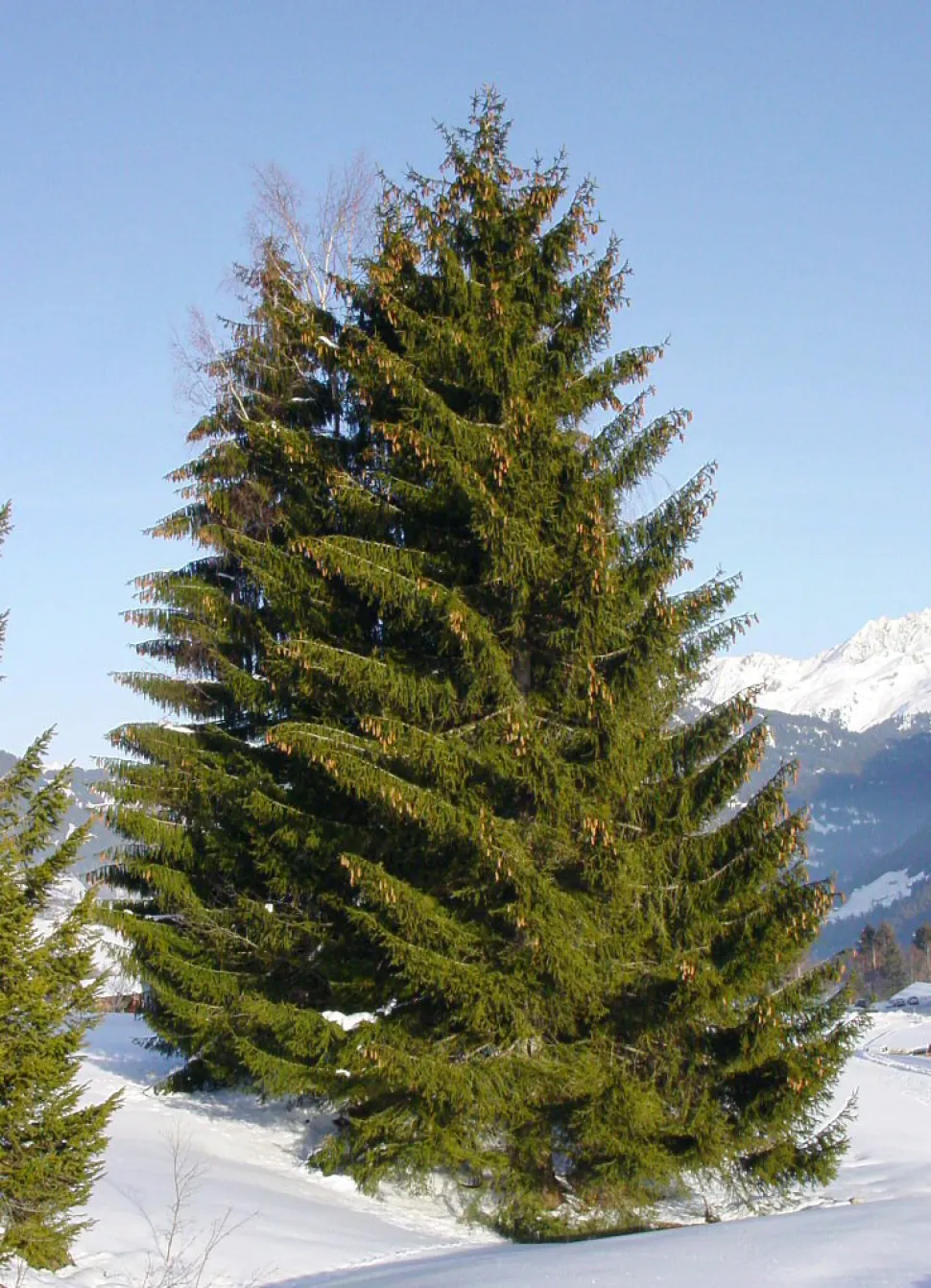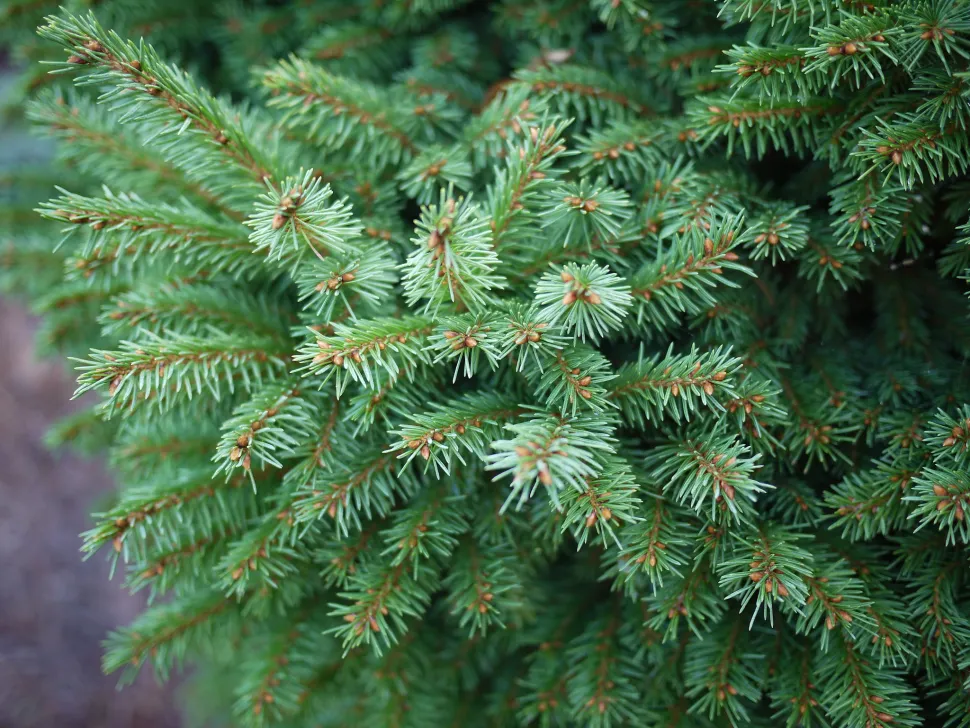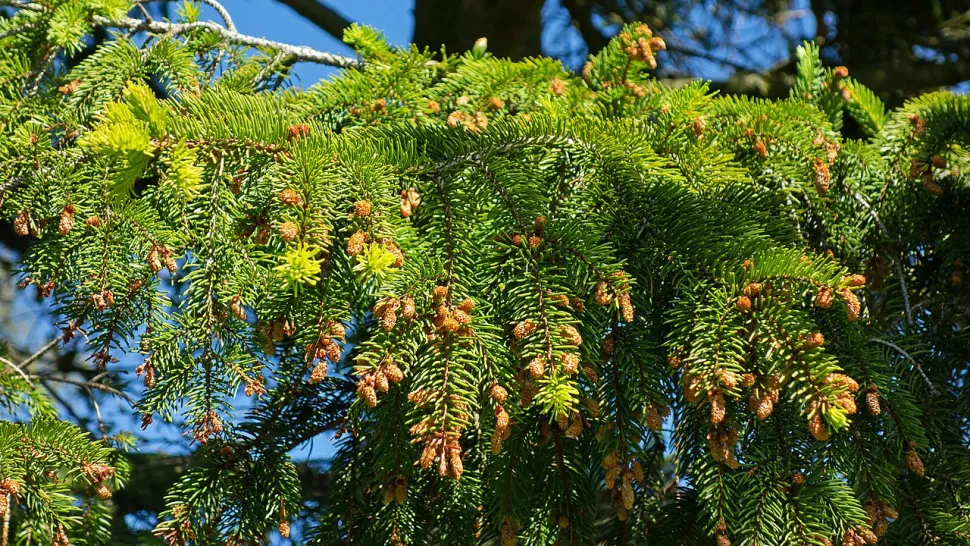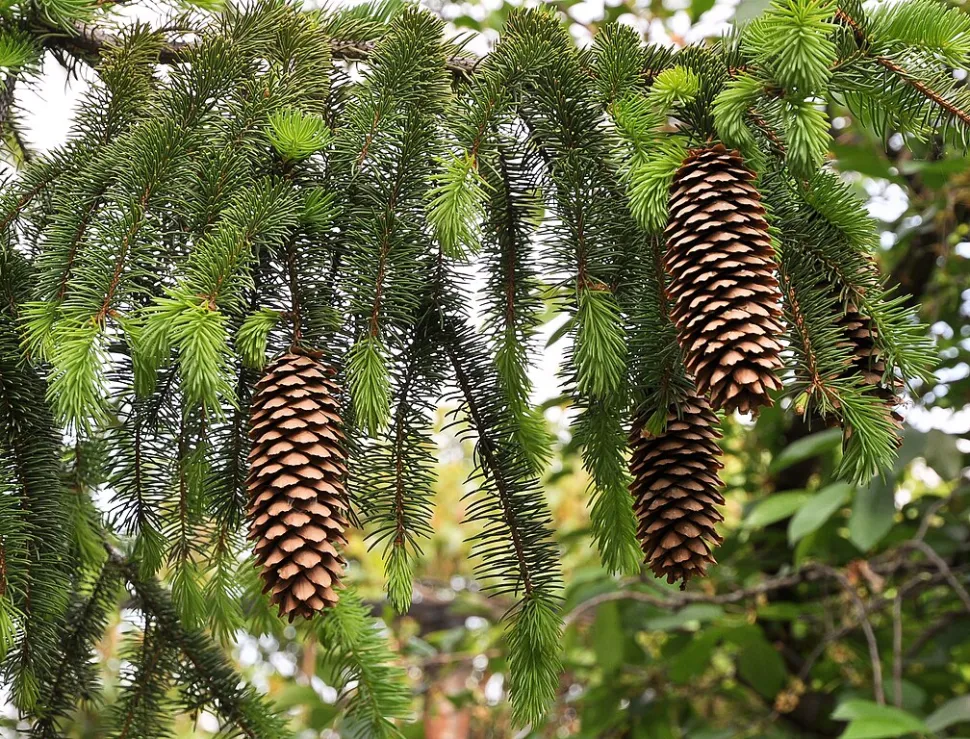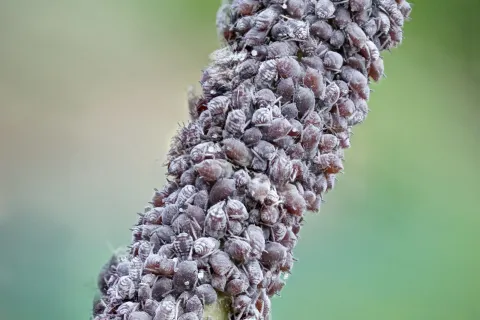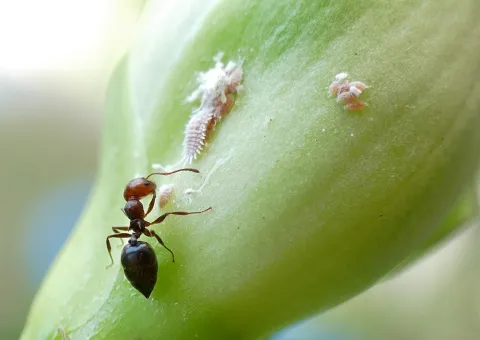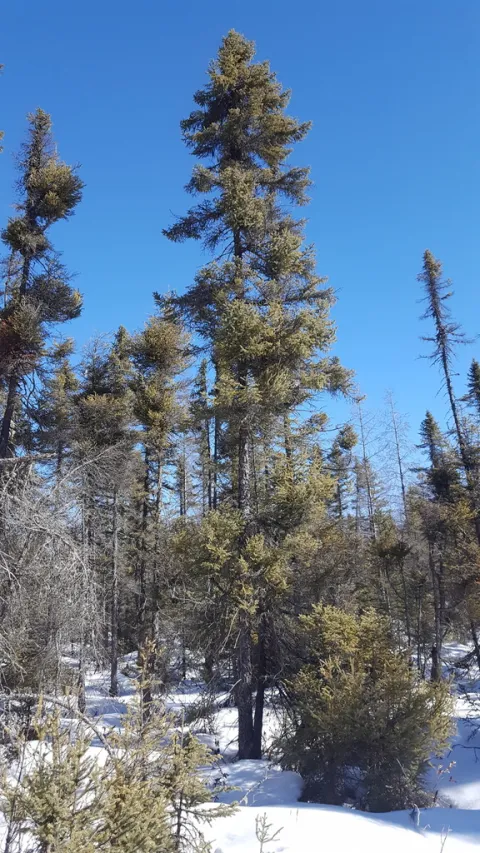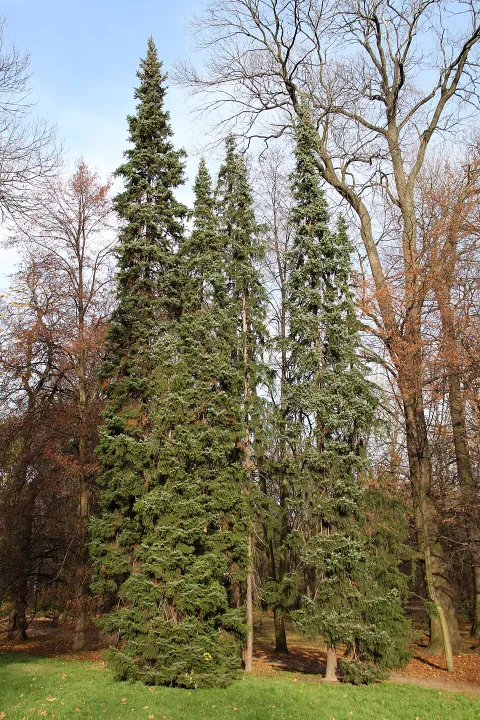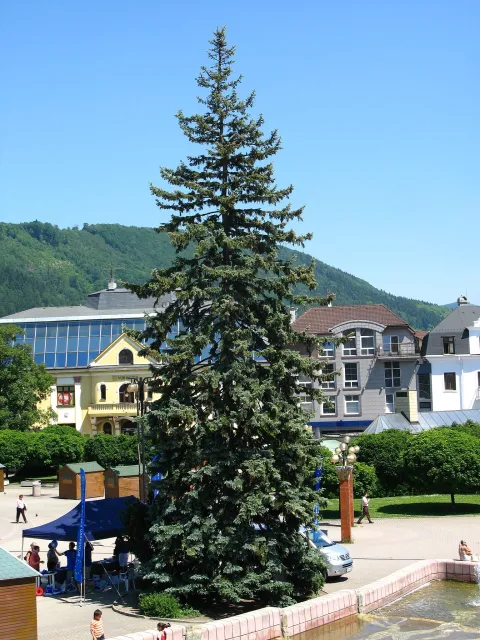Picea abies, the common spruce
Present in almost every living room at Christmas, the common spruce, in Latin Picea abies var. Abies, lives all year round in European forests. A member of the Pinaceae family, it grows from France to Russia, and from Finland to the Mediterranean.
How to recognize the common spruce, Picea abies var. Abies?
Picea abies is a resinous tree with a straight trunk and conical crown. In the wild, the common spruce exceeds 60 meters in height and more than ten meters in span.
The conifer's trunk is covered with scaly bark. Reddish in young trees, it later turns grey-brown.
The reddish-brown branches are drooping at the bottom, straight in the middle and ascending at the top.
Foliage lasts all year round. The dark-green, quadrangular, prickly needles measure up to 25 millimeters long and two millimeters wide. Each thorn is set in a cushion.
Both male and female cones are found on the same tree. The former are yellow-orange spindles and carry the pollen. The latter grow at the end of branches. Brown when mature, pine cones can reach 18 centimetres. The brown seeds have a winged membrane that facilitates their dispersal.
Norway spruce is not a toxic plant. It is even said to have antiseptic, sedative and expectorant properties. Although it can help relieve coughs, Picea abies is best known for its role as a Christmas tree. In recent years, however, this king of the forest has been gradually superseded by nordmann fir (Abies nordmanianna), which has the advantage of preserving its needles better, and the blue fir Picea pungens), with its more original color.
Our maintenance tips
Consider the growth of your Norway spruce before planting it. The largest specimens exceed several dozen meters in height and should therefore be installed where they won't get in anyone's way.
Watering
Allow the substrate to dry on the surface (at least three centimetres) between waterings. Water the root ball of your Picea abies var. Abies with non-calcareous water at room temperature.
Don't forget to empty any stagnant water from the dish or pot. It will rot the roots.
Spray
Spray foliage with non-calcareous water at room temperature. Fogging helps improve humidity, clean leaves and control pests.
Repotting
Choose a pierced terracotta pot. This material ensures more uniform evaporation of water and prevents root rot. The container should be deep so as not to topple under the weight of the plant and allow your Picea abies var. Abies to grow. Gravel or clay balls can be placed at the bottom to improve drainage.
Pour in a layer of rich potting soil, such as potting soil for acid-loving plants. Plant your Picea abies var. Abies. The root ball should be three to five centimetres below the edge to form a watering trough. Add potting soil.
Press down and water until the water runs off through the drainage holes to encourage rooting.
Fertilization
To promote the growth of your Picea abies var. Abies, apply fertilizer in spring and summer.
Fertilize your Norway spruce with a conifer fertilizer once a month. Follow the dosage and manufacturer's instructions to avoid damaging the foliage.
Prune
Your Norway spruce does not need pruning. On the contrary, pruning could be detrimental to its growth.
You can, however, remove dead branches in early summer using a clean, sharp tool, such as pruning shears.
Plantation
Soak your Norway spruce to rehydrate the root ball.
Meanwhile, dig a hole twice the size of the root ball. Plant your Norway spruce. The rootball should be level with the soil. Fill in with a mixture of garden soil and universal potting compost. You can add fertilizer if your soil is poor.
Press down and water thoroughly to help the plant take root.
Seedling
Your seeds are more likely to germinate if you stratify them cold.
Fill an airtight bag (e.g. A freezer bag) with potting soil for seedlings and plantations. Moisten the substrate. Bury your seeds in the potting soil, close the bag and place it in a place where the temperature is between 0 and 5°C for three weeks (refrigerator, garage).
Check your seeds regularly to make sure the potting soil stays moist and doesn't rot. As soon as a seed germinates, you can plant it.
Pour seedling and planting soil into cups. Plant your seed a centimetre deep. Spray the substrate to moisten it.
Place your seedlings in a bright spot where the temperature does not exceed 15°C.
Diseases / Threats
Information
| Family | Pinaceae - Pinaceae |
| Type | Picea - Picea |
| Species | Picea abies - Picea abies |
| Lifecycle | Perennial |
| Foliage | Evergreen |
| Exposure | |
| Substrats | |
| Planting methods |
Open ground In pots In tubs |
| Category | |
| Tags |
Beginner Rustic |
| Origins |
Northern Europe Eastern Europe Southern Europe Western Europe |
| Hardiness (USDA) | 3a |
| Leaf color |
|
| Flower colors |
|
| Fruit color |
|
Discover plants from the same family
